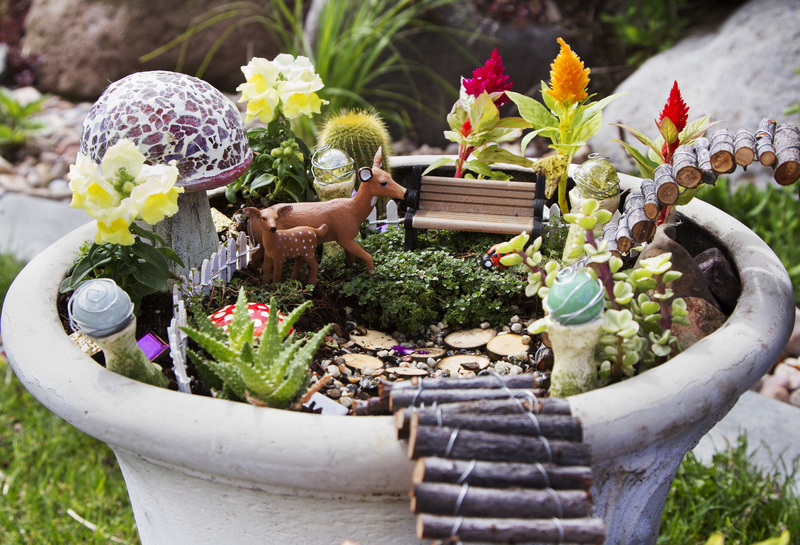Simple Strategies for Beginners to Get the Perfect Lawn
Dreaming of a lush, green oasis right in your backyard? Achieving the perfect lawn as a beginner may seem daunting, but with some essential strategies and a dash of effort, you'll be well on your way to enjoying an enviable, healthy yard. In this comprehensive guide, we reveal the best beginner tips and strategies for the perfect lawn. Whether you're starting from scratch or revitalizing an existing patch, keep reading to discover how to transform your turf into the pride of the neighborhood.

Why a Healthy Lawn Matters
A well-maintained yard is more than just visually appealing. A perfect lawn provides:
- Enhanced curb appeal that boosts your home's value
- Environmental benefits like filtering air, reducing runoff, and cooling your surroundings
- A safe play area for children and pets
- A relaxing retreat for family and friends
Now, let's explore the simple strategies that will turn your lawn dreams into reality!
1. Understand Your Lawn's Specific Needs
Assess Your Lawn Type and Climate
Before you purchase any products or equipment, identify your grass type and consider your local climate. The most common varieties fall into two categories:
- Cool-season grasses: Fescue, Kentucky bluegrass, Ryegrass (perform best in northern regions)
- Warm-season grasses: Bermuda, Zoysia, St. Augustine (thrive in southern or hot climates)
Knowing your grass type is crucial for proper lawn care, watering, and fertilizing schedules, making it the backbone of every perfect lawn strategy.
Analyze Your Soil
Healthy lawns grow from healthy soil. Perform a soil test to check:
- pH levels (ideal range: 6.0-7.0)
- Nutrient content (nitrogen, phosphorous, potassium)
- Soil composition (sand, silt, clay ratio)
2. Master the Art of Mowing
Mow at the Right Height
- Never cut more than one-third of the grass blade in a single mow.
- Higher mowing heights encourage deeper roots and shade out weeds.
- Cool-season grasses: Best kept 2.5 to 4 inches tall.
- Warm-season grasses: 1 to 3 inches is ideal.
Keep Blades Sharp
Dull mower blades tear grass instead of cutting it cleanly, causing stress and increasing disease risk. Sharpen blades twice each mowing season for optimal health and appearance.
3. Water Wisely for a Perfect Lawn
Water Deeply, Not Frequently
A top mistake beginners make is watering lightly but often.
- Deep, infrequent watering (about 1 inch per week including rainfall) encourages roots to grow deep into the soil.
- Early morning is the best time to water your lawn, minimizing evaporation and fungal issues.
Adjust for your Lawn's Conditions
- Shady lawns require less water than sunny ones.
- Sandy soils drain faster and may need shorter, more frequent cycles.
- Sloped lawns benefit from multiple short watering sessions to avoid runoff.
4. Feed and Fertilize Your Lawn Smartly
Choose the Right Fertilizer
Fertilizer is vital for sustaining a lush, green lawn. Select products tailored to your grass type and soil, focusing on:
- Slow-release fertilizers for consistent nutrients
- Starter fertilizers if establishing a new lawn
- Organic options for environmentally friendly choices
Follow bag instructions precisely--over-fertilizing can burn your grass or contribute to pollution.
Right Timing and Application
- Feed cool-season grasses in early fall and late spring.
- Fertilize warm-season grasses from late spring to summer.
- Use a spreader for even application and overlap slightly to avoid streaks.
- Water in fertilizer after application to ensure nutrients reach the roots.
5. Combat Weeds, Pests, and Lawn Diseases
Weed Control Basics
Weeds compete with grass for light, water, and space. Early intervention and regular maintenance are key strategies for the perfect backyard lawn:
- Thicken your turf - healthy, dense grass naturally chokes out weeds
- Hand-pull weeds or spot-treat with safe herbicides
- Use pre-emergent weed preventers in early spring
Prevent and Control Pests
- Monitor for lawn-damaging insects like chinch bugs, grubs, and sod webworms
- Encourage beneficial insects--ladybugs and predatory beetles--by choosing eco-friendly options
- If pests are a problem, use lawn-specific insecticides sparingly according to directions
Watch for Common Lawn Diseases
- Overwatering, poor drainage, and dull mower blades can contribute to fungus and disease
- Aerate compacted soil and avoid wetting at night to prevent issues
- Look for brown patches, rust spots, or rings and seek advice quickly if you see symptoms
6. Improve Lawn Health with Aeration and Overseeding
Aerate to Relieve Compaction
Soil compaction stifles root growth and water absorption. Aerate your yard using a core aerator, especially in high-traffic areas, once a year--ideally in fall for cool-season grass and spring for warm-season varieties.
Overseed for Thicker, Greener Lawn
A simple way to revamp a thin or tired-looking yard is overseeding:
- Spread new grass seed after aeration for better soil contact
- Water consistently until the new seedlings establish
- Choose a seed blend to match your existing turf
7. Smart Maintenance Habits for a Flawless Lawn
Mulch Your Grass Clippings
- Leave clippings on the lawn ("grasscycling") to return valuable nitrogen and organic matter to the soil
- Keep the mower blade sharp so clippings decompose quickly
Seasonal Cleanup and Edging
- Remove debris and leaves in fall and spring to prevent smothering the grass
- Use an edger along sidewalks and flower beds for a tidy, defined appearance
Adjust your Care with the Seasons
- In spring, repair lawn damage, fertilize, and address weeds early on
- Summer means regular mowing, deep watering, and pest monitoring
- Fall is best for aeration, overseeding, and pre-winter feeding
- Winter--avoid lawn traffic and keep the surface clear of heavy snow and debris
8. Choose the Right Tools for Lawn Care Success
Quality tools make lawn care easier and more efficient. Every beginner should have:
- Reliable lawn mower (push, ride-on, or battery-powered for small yards)
- String trimmer/edger for borders and hard-to-reach spots
- Garden rake, leaf blower, and sturdy hose/watering can
- Quality spreader for seed and fertilizer
- Aerator (rent annually or share with neighbors)
Invest in sharp blades and keep all tools clean to avoid spreading lawn diseases.
Frequently Asked Questions About Getting the Perfect Lawn
How often should I mow my lawn for the best results?
During peak growth, mow once a week or as soon as your grass grows one-third taller than the recommended height. Mowing less frequently can lead to stress and scalping.
What's the easiest way to control weeds without chemicals?
Thick, healthy grass is the best defense. Maintain proper mowing, overseed as needed, and hand-pull weeds before they seed. Consider natural pre-emergent products, like corn gluten meal, for eco-friendly weed prevention.
Can I achieve the perfect lawn without a lot of equipment?
Absolutely! Focus on the basics: regular mowing, wise watering, and the right fertilizer. Rent larger tools, like aerators, or borrow from neighbors to save money and space.
Why is my grass yellowing or patchy?
Yellow or patchy lawns are often due to watering issues, compacted soil, lack of nutrients, or disease. Conduct a soil test, adjust watering, aerate, and feed your lawn appropriately for quick recovery.

Conclusion: Achieve a Lush, Green Lawn with Simple Steps
With these beginner-friendly and simple strategies for a perfect lawn, anyone can transform their outdoor space--no expert skills or expensive tools required. Remember, consistency is key:
- Match your lawn care to your grass type and soil needs
- Mow, water, and feed wisely
- Be proactive in fighting weeds, pests, and lawn diseases
- Aerate and overseed annually for lasting health
- Use the proper tools and maintain good lawn care habits every season
Start today with these practical techniques, and soon you'll be enjoying the beauty and satisfaction of a vibrant, thriving lawn--all with just a bit of effort and care!
Additional Lawn Care Tips for Beginners
- Join local gardening groups online for advice and support tailored to your region
- Check for city water restrictions before starting watering schedules
- Keep a lawn care calendar or app to track tasks and treatments
Commit a little time each week, keep these simple strategies at heart, and you'll enjoy the perfect lawn that neighbors will envy for years to come!